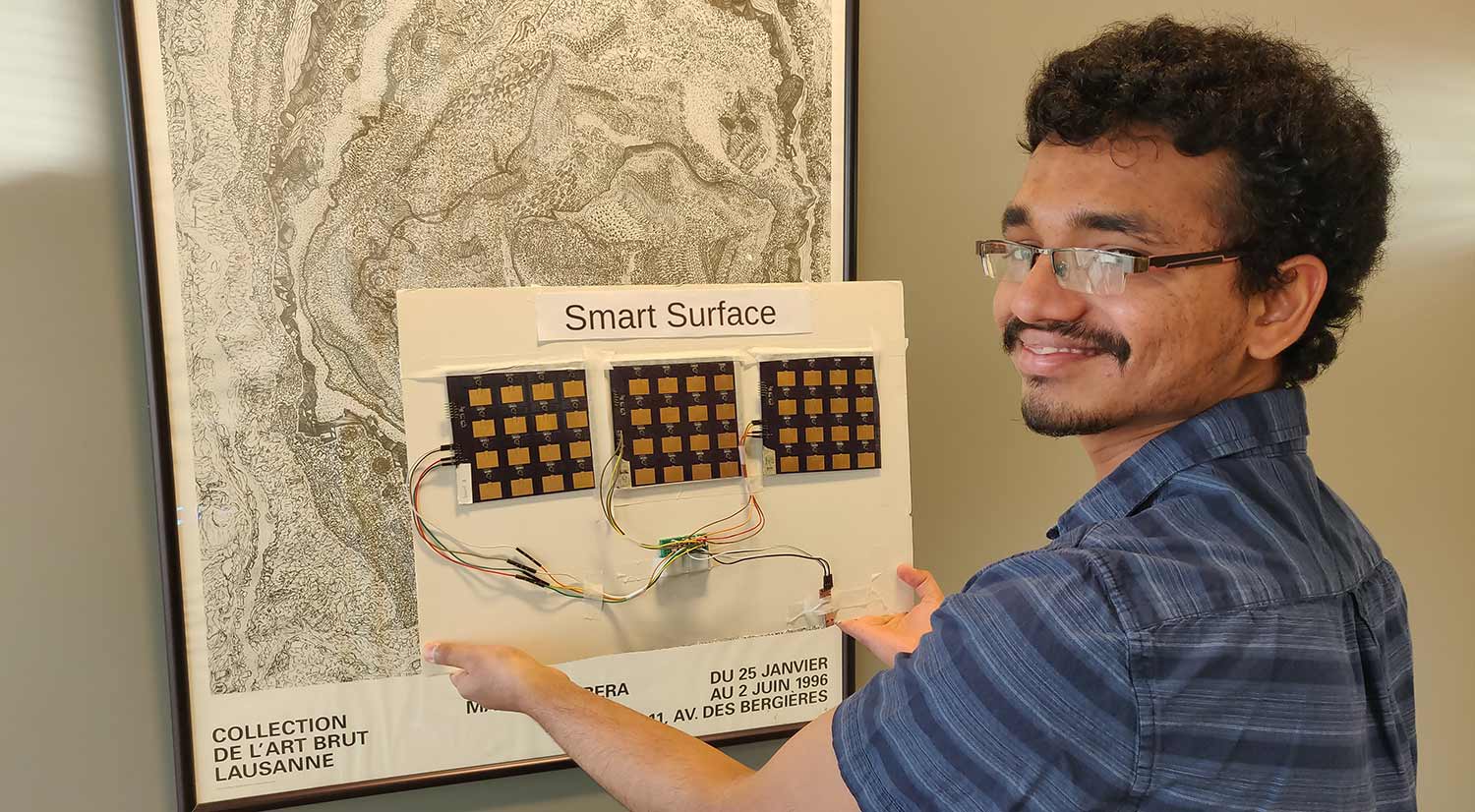By:
- Liezel Labios
Published Date
By:
- Liezel Labios
Share This:

Manideep Dunna, a UC San Diego electrical and computer engineering Ph.D. student, holds a prototype "smart surface" that can be stuck on the wall to improve WiFi connectivity in the home and office.
WiFi-Boosting ‘Smart Surface’ Could Help Remote Workers and Students
Frustrated with spotty WiFi connection? Engineers at the University of California San Diego have developed a “smart surface” that could make signal available in dead spots—and also make the existing connection twice as fast.
“You can stick this on your wall like a painting to improve WiFi connectivity in your home or office,” said Dinesh Bharadia, a professor of electrical and computer engineering at the UC San Diego Jacobs School of Engineering.
The technology could benefit both employees who are working remotely and students who are receiving remote instruction. It could also reduce interference from your neighbors’ WiFi networks, which would make working or learning from home easier for everyone, Bharadia said.
In indoor tests, the smart surface extended WiFi range from 30 meters (98 feet) to 45 meters (147 feet). It also doubled the data rate in areas already receiving signal.
“You can use this with off-the-shelf WiFi devices. You don’t need specialized equipment to make it work,” Bharadia said. And the technology is low enough power that it could last for a year on a coin cell battery, researchers said.
“The surface gives the improved signal advantage of a large array but without having to modify the access point or any of the devices,” said UC San Diego electrical and computer engineering professor Daniel Sievenpiper, who is a collaborator on the study.
The smart surface is a 10 centimeter × 30 centimeter printed circuit board containing 48 small antennas. These antennas combine and reflect incoming WiFi signals from a router or access point to create an entirely new path for signals to travel. This new path, or data stream, is just as strong as the original one coming from the router or access point.
“The key feature of this technology is that it creates a second data stream that goes to your phone or other WiFi-connected device. So not only can you get connectivity in areas that don’t have it, you also get double the data rate in areas where you already have connectivity,” Bharadia said.
This is made possible by innovative hardware and algorithms that the team developed. Each antenna is programmed to adjust the phase of the incoming signal, or radio wave, that it receives so that all the waves reflected off the surface have the same phase at the receiver. These waves then merge to make a single amplified radio wave.
“Initially, the antennas are hit with incoming signals of different phases, so you get a reflected signal that’s weak, or no signal at all. It’s like adding 1 and -1. But by changing any -1 phases to +1, we boost the signal strength,” said Manideep Dunna, a UC San Diego electrical and computer engineering Ph.D. student in Bharadia’s lab.
Researchers envision this setup will be inexpensive to deploy. Mass producing the printed circuit boards could cost as little as $5 each, Dunna said.
In future studies, the team will explore if combining multiple smart surfaces can further improve data rate. “Could adding one more triple the data rate? And could another one quadruple it? That would be interesting to find out,” Bharadia said.
The team is also working on making the smart surface flexible.
Share This:
Stay in the Know
Keep up with all the latest from UC San Diego. Subscribe to the newsletter today.



